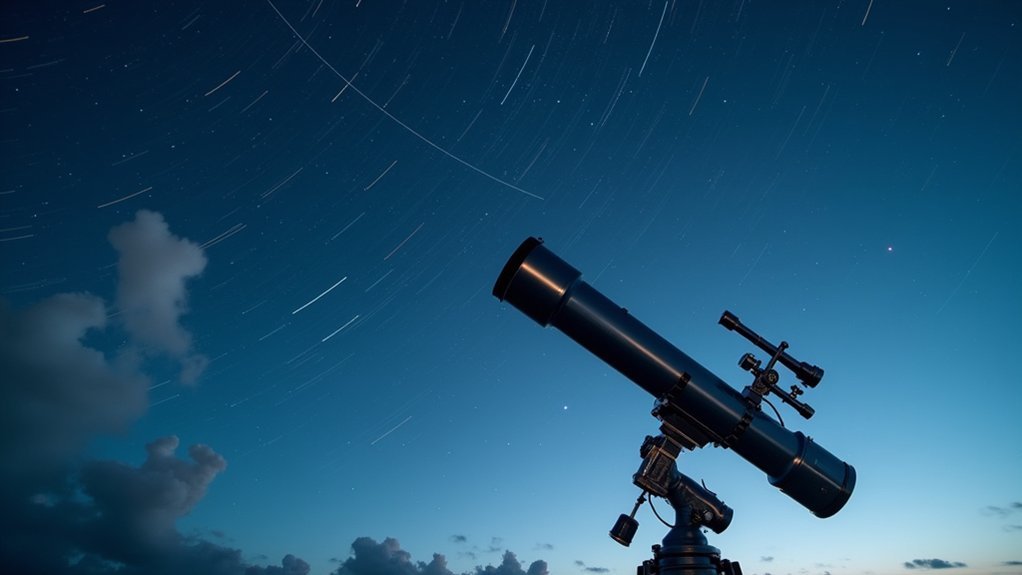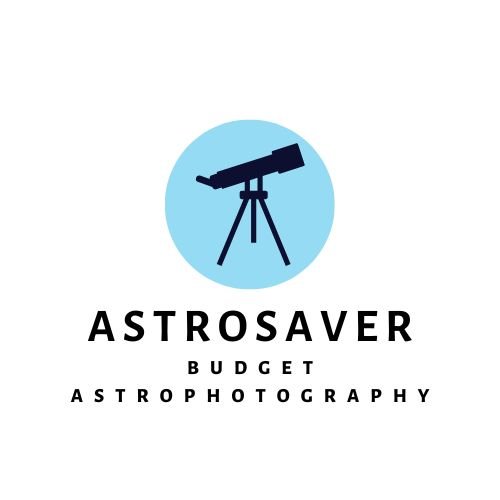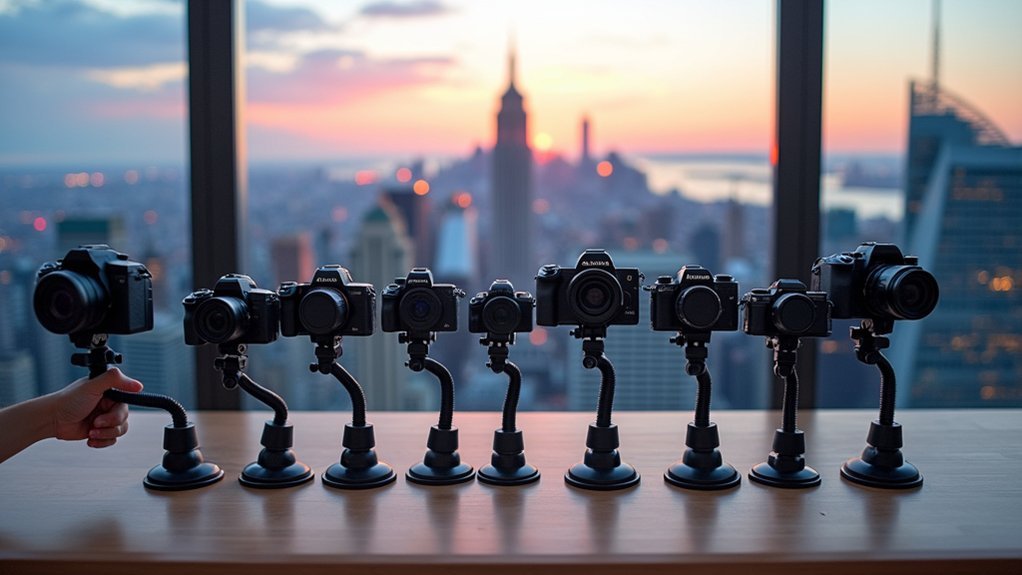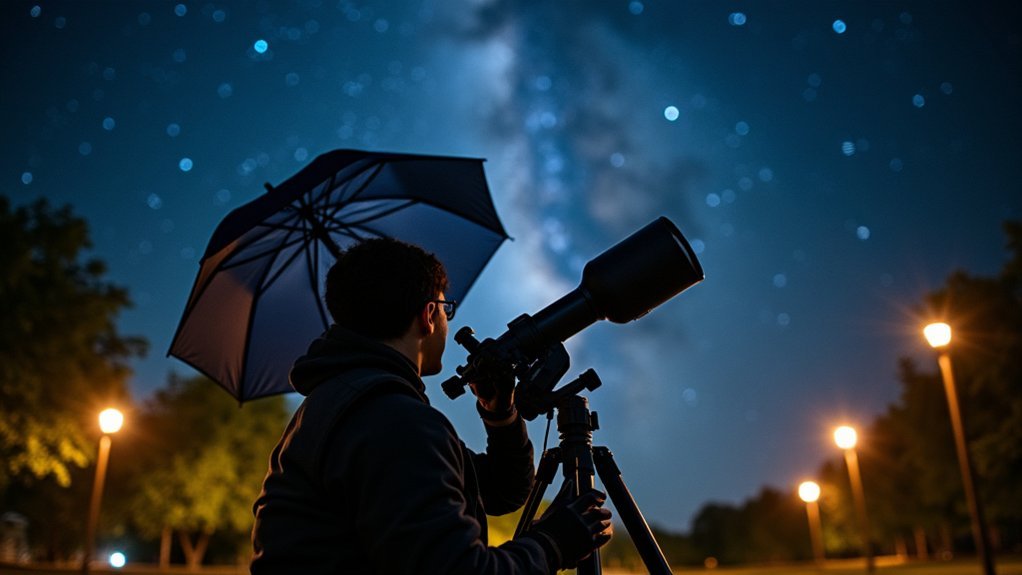Scotch Yoke trackers are ideal for astrophotography because they convert rotational motion into linear movement that perfectly counteracts Earth’s rotation. You’ll appreciate their simple, affordable design (often under $50) that achieves 30-minute exposures without star trails. Their mechanical precision eliminates complex electronics while maintaining excellent tracking accuracy with minimal moving parts. They’re portable, reliable, and offer exceptional performance for wide-field deep sky imaging. The right construction materials and precise pivot placement will transform your night sky photography results.
What Makes Scotch Yoke Trackers Ideal For Astrophotography?

Simplicity drives the appeal of Scotch Yoke Trackers in the astrophotography community. Also known as the Scotch Mount, these ingenious devices let you capture stunning long exposure shots of up to 30 minutes without electric motors or complex gear.
For about $20, you can build your own tracker using plywood and a piano hinge, making astrophotography accessible even on a tight budget. The pivoting tangent screw, positioned 11.42 inches from the hinge, precisely compensates for Earth’s rotation at 15 degrees per hour.
Aligning your tracker with the celestial pole is straightforward—just use the North Star as your guide. This elegant mechanical solution dramatically reduces star streaking in your images while encouraging experimentation among enthusiasts who might otherwise be priced out of the hobby.
The Mechanics Behind Scotch Yoke Motion Conversion
While appearing deceptively simple, the Scotch yoke mechanism transforms rotational motion into precise linear movement through an elegant mechanical solution. At its core, a pin attached to a rotating wheel slides within a slotted yoke, converting circular motion to straight-line travel.
When you align this mechanism with Earth’s rotation, your camera moves at the exact angular rate needed to counteract our planet’s movement. The beauty lies in how this basic design minimizes tracking errors through mechanical precision rather than complex electronics.
You’ll find you can adjust the mechanism’s movement length and frequency based on your camera’s focal length and desired exposure time. This adaptability, combined with its straightforward construction, makes the Scotch yoke tracker an accessible yet powerful tool for capturing clear, streak-free images of distant celestial objects.
Cost-Effective Alternatives to Commercial Tracking Mounts
You’ll find that building a Scotch yoke tracker with under $50 in materials delivers performance surprisingly comparable to commercial mounts costing ten times as much.
When comparing tracking accuracy and exposure capabilities, DIY mounts can achieve similar results to entry-level commercial options if you focus on precise alignment and smooth operation.
To avoid common building mistakes, make certain your pivot points are friction-free, your drive rate is accurately calculated, and your base is perfectly aligned with the celestial pole.
DIY Materials Under $50
Building your own Scotch yoke tracker represents a remarkable alternative to commercial tracking mounts that often cost hundreds of dollars.
You’ll need just a few basic diy materials to construct what’s sometimes called a Barn-Door Mount: a 6-inch-by-12-inch plywood board, a piano hinge, and a quarter-twenty screw are the foundation pieces.
These components, easily found at your local hardware store, combine with a lightweight tripod head to create a functional tracking system for under $50.
The beauty of this design lies in its simplicity—aligning with Earth’s rotation without requiring electric motors.
With common tools and accessible materials, you can build a portable device capable of tracking celestial objects for exposures up to 30 minutes, making quality astrophotography accessible regardless of your budget.
Comparing Performance Metrics
Despite their humble price tag, Scotch Yoke Trackers deliver impressive performance that rivals commercial tracking mounts costing ten times more. You’ll find these $20 DIY solutions can achieve 30-minute exposure times with remarkable stability when properly aligned to the celestial pole.
The key performance advantage comes from their simple mechanical design. By minimizing moving parts at the top and bottom of the mount, these trackers reduce tangent error that often plagues cheaper commercial options.
Adding a pivoting tangent screw further enhances tracking precision, allowing you to capture more detailed images of distant celestial objects.
While commercial trackers offer automation, Scotch Yoke mounts frequently outperform in portability and field reliability.
For budget-conscious astrophotographers, the performance-to-price ratio makes these DIY trackers an unbeatable choice for capturing the night sky.
Avoiding Common Building Mistakes
While the performance benefits of Scotch Yoke trackers are impressive, their success hinges entirely on careful construction. The most critical element is the precise placement of the tangent screw at exactly 11.42 inches from the hinge point. Even a small deviation will greatly reduce tracking accuracy, limiting your ability to capture longer exposures.
You’ll achieve better results by using a gear segment rather than a straight bolt connection, as this minimizes tracking errors that would otherwise appear during 30-minute exposures.
Before starting your build, consult resources like PhilHarrington.net for detailed guidance that helps avoid frustrating mistakes.
Precision Engineering on a DIY Budget
Even though precision tracking mechanisms typically command premium prices in astronomy equipment, the Scotch yoke tracker stands as a remarkable exception.
You can build one using basic materials from your local hardware store—plywood, a piano hinge, and lightweight tripod heads—for approximately $20.
The pivoting tangent screw mechanism delivers precision engineering without the hefty price tag. This clever design allows for exact camera movement control, enabling you to capture stunning long exposures of celestial objects.
The adjustable position of the tangent screw helps reduce tracking errors that might otherwise ruin your shots.
What’s most impressive is that you’ll achieve professional-quality results without specialized equipment.
The design prioritizes polar alignment adjustability, ensuring accuracy while maintaining the compact, lightweight form that makes field setup effortless.
Overcoming Earth’s Rotation With Simple Geometry
The genius of the Scotch yoke tracker lies in its elegant solution to a fundamental astrophotography challenge: Earth’s constant rotation.
You’ll find that by positioning the tangent screw’s pivot point exactly 11.42 inches from the hinge, your tracker perfectly matches Earth’s rotation rate of 15 degrees per hour.
This precise geometric arrangement eliminates the need for complex electronics while delivering impressive results. You can achieve exposure times up to 30 minutes without star streaking – critical for capturing deep-sky objects.
When you rotate the clockwheel counter-clockwise in sync with your watch’s second hand, you’re effectively canceling out Earth’s movement.
The beauty of the Scotch yoke design is how it turns basic geometry into a powerful astrophotography tool, making quality celestial imaging accessible even on a modest budget.
Materials Selection for Optimal Tracking Performance
Now that you understand the geometric principles behind Scotch yoke trackers, choosing the right materials becomes your next challenge. As Earth turns, your materials selection directly impacts tracking accuracy.
Opt for lightweight plywood or aluminum for the main structure, making your tracker portable while maintaining necessary rigidity. Install a quality piano hinge at the pivot point to guarantee smooth rotation without unwanted resistance.
For precision tracking, incorporate a tangent screw with gear segment design that matches Earth’s rotation rate.
Don’t overlook your hardware choices—durable 1/4-20 screws provide secure connections throughout long exposure sessions.
Finally, mount everything on a lightweight tripod head to easily align with celestial targets. These material considerations transform simple geometry into a practical astrophotography tool that performs reliably night after night.
Assembly Tips for Maximum Stability and Accuracy
When assembling your Scotch yoke tracker, precise measurements become the cornerstone of tracking success. Secure the piano hinge firmly to both boards to eliminate wobbling that compromises tracking accuracy. Position your tangent screw exactly 11.42 inches from the hinge pin for proper celestial alignment.
| Component | Critical Assembly Tip |
|---|---|
| Piano hinge | Fasten securely to prevent wobble |
| Tangent screw | Place precisely 11.42″ from hinge pin |
| Tension system | Use rubber band between screw eyes |
| Tripod mount | Drill balanced placement for smooth pivoting |
| Drive mechanism | Consider gear segment over straight bolt |
For the adjustable tripod head attachment, drill with precision to guarantee balanced weight distribution. This allows smooth pivoting during operation. The rubber band tension system provides the necessary compression for stability while maintaining easy adjustment capabilities.
Calculating the Perfect Tracking Rate for Your Setup
Positioning your tracker precisely sets the stage for perfect tracking rates – the heartbeat of your astrophotography system.
For ideal performance, place your tangent screw’s pivot point exactly 11.42 inches from the hinge, aligning with Earth’s rotation of approximately 15 degrees per hour.
You’ll need to rotate your mount counter-clockwise in sync with your watch’s second hand, ensuring your camera follows the stars properly throughout your exposure.
Remember that your lens focal length directly impacts maximum exposure times – shorter focal lengths allow longer exposures without star trails appearing in your images.
Wider views grant greater forgiveness—a 14mm lens buys precious extra seconds that a 200mm telephoto simply cannot afford.
Don’t exceed recommended exposure times for your specific lens. Instead, maintain shorter exposures to avoid tracking errors.
This careful calibration between your equipment’s tracking rate and Earth’s rotation will deliver crisp, streak-free astrophotographs every time.
Extending Exposure Times With Minimal Star Trailing
Although basic astrophotography setups typically limit exposure times to mere seconds, your Scotch yoke tracker can dramatically extend these intervals to 30 minutes or more with minimal star trailing.
This remarkable capability comes from the mount’s ability to counteract Earth’s rotation at approximately one inch every 20 minutes at one RPM.
For ideal results, you’ll need proper polar alignment using the North Star as your reference point.
Once aligned with the celestial pole, the mount’s pivoting tangent screw provides smooth tracking that follows stars accurately across the night sky.
You can manually adjust the rotation rate to match your specific lens focal length, allowing you to customize extended exposure times based on your equipment.
This fine-tuning capability guarantees your deep-sky images remain crisp and detailed without the motion blur that typically ruins long exposures.
Frequently Asked Questions
Do You Need a Star Tracker for Astrophotography?
No, you don’t absolutely need a star tracker, but you’ll get considerably better results with one. It’ll allow longer exposures without star trails, capturing fainter objects and more details in your astrophotography.
What Is the Difference Between Star Tracker and Equatorial Mount?
Your star tracker has one axis and is portable, while an equatorial mount offers two axes aligned with Earth’s axis. You’ll find star trackers simpler and cheaper, but equatorial mounts enable longer exposures and precise tracking.
What Is the Difference Between Tracking and Guiding Astrophotography?
You’ll use tracking to follow celestial objects as Earth rotates, while guiding involves real-time corrections to that tracking. Tracking prevents star trails, but guiding refines accuracy for longer exposures with sharper details.
What Type of Mount for Astrophotography?
For astrophotography, you’ll need either an equatorial or alt-azimuth mount. Equatorial mounts track celestial objects more precisely, while German equatorial mounts offer better stability. Motorized GoTo mounts provide automated object location for beginners.
In Summary
You’ll find Scotch yoke trackers provide an elegant solution to astrophotography challenges. Their simple mechanical design converts rotary motion into precise linear movement, tracking stars with remarkable accuracy. By building your own, you’ll save money while enjoying longer exposures without star trails. Don’t let Earth’s rotation limit your imaging—embrace this DIY approach and watch your night sky photography transform with crisp, detailed cosmic captures.





Leave a Reply